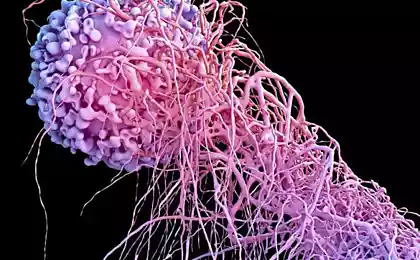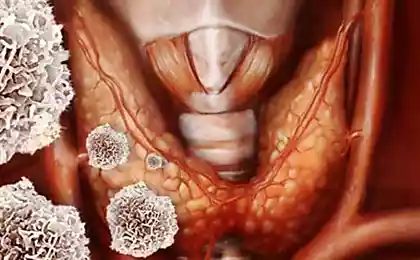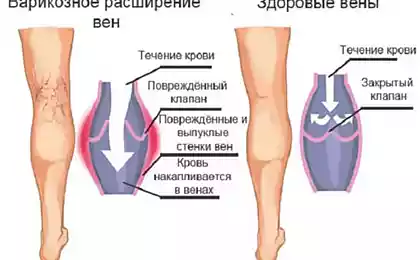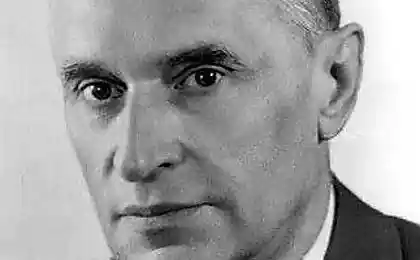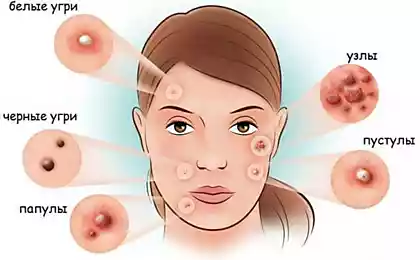513
Non-surgical methods of treatment of chronic ENT diseases
Until recently, the only way of treatment, such as adenoids or tonsils, their removal, and in order to cure sinusitis, it was necessary to make a puncture.
Fortunately, today there are a large number of modern non-surgical methods of treatment of chronic diseases of the upper respiratory tract.
As a rule, the manifestations of ENT diseases begin in childhood and over time from the acute phase becomes chronic.
What could be the reason of development of diseases of the ear, nose and throat?
In cases where the ENT diseases become chronic, despite the fact that people were prescribed treatment complied with the recommendations, the main cause is narrowing of the maxillary bones.
Facial section of the skull. Anatomy
Most of the front of the skull is the skeleton of the masticatory apparatus — the upper and lower jaw.

The human skull (Fig. 1 — the outer surface of the base of the skull; Fig. 2 — inner surface of the base of the skull): 1 — upper jaw; 2 — zygomatic bone; 3 — sphenoid bone; 4 — the temporal bone; 5 — parietal bone; 6 — occipital bone; 7 — Coulter; 8 — ethmoid bone; 9 — frontal bone; 10 — the ethmoid bone.
The upper jaw is verkhnebureinsk division of the facial skull. It is paired bone which participates in the formation of the lower wall of the orbit, lateral wall of the nasal cavity and hard palate. Also, the upper jaw refers to the number of pneumatic bones, because it is an extensive cavity, lined with mucous membrane maxillary sinus.
The mandible is the unpaired bone and the only movable bone of the skull that connects with the temporal bone and forms the temporo-mandibular joints.
Facial section of the skull as well constitute the so-called small facial bones: paired Palatine, inferior nasal Concha, lacrimal, zygomatic, and, vomer and ethmoid bone – the bone that are responsible for nasal breathing.
Narrowing of the maxillary bone: causes, consequences
Cause narrowing of the anterior bones of the skull is trauma during birth or acquired throughout life.
Any injury of the skull, whether the compression of the baby's head during delivery or a minor blow, can lead to displacement of the skull bones. This occurs most often in the area the scaly seams that connect all the bones of the skull except the lower jaw and the hyoid bone.
After displacement of the bones, the skull and the soft tissues are unable to function correctly, so the body immediately starts the process of adaptation and adapts to new conditions.
Thus, we consider a number of implications that arise as a result of displacement of the skull bones and lead to chronic ENT diseases.

Treatment of chronic ENT diseases
The treatment is to eliminate the root causes of development of edema of mucous membrane – displacement of the skull bones.
In the complex treatment may include cranio-sacral therapy, various manual techniques, including the author's techniques and physical therapy.
Using these methods we are able to cure diseases such as:
See also: anti-Parasitic cleansing and priming
It is necessary to know! 6 stages of slagging of the organism
P. S. And remember, only by changing their consumption — together we change the world! ©
Join us in Facebook , Vkontakte, Odnoklassniki
Source: asgardmed.ru/content/lechenie-hronicheskih-lor-zabolevaniy
Fortunately, today there are a large number of modern non-surgical methods of treatment of chronic diseases of the upper respiratory tract.
As a rule, the manifestations of ENT diseases begin in childhood and over time from the acute phase becomes chronic.
What could be the reason of development of diseases of the ear, nose and throat?
In cases where the ENT diseases become chronic, despite the fact that people were prescribed treatment complied with the recommendations, the main cause is narrowing of the maxillary bones.
Facial section of the skull. Anatomy
Most of the front of the skull is the skeleton of the masticatory apparatus — the upper and lower jaw.

The human skull (Fig. 1 — the outer surface of the base of the skull; Fig. 2 — inner surface of the base of the skull): 1 — upper jaw; 2 — zygomatic bone; 3 — sphenoid bone; 4 — the temporal bone; 5 — parietal bone; 6 — occipital bone; 7 — Coulter; 8 — ethmoid bone; 9 — frontal bone; 10 — the ethmoid bone.
The upper jaw is verkhnebureinsk division of the facial skull. It is paired bone which participates in the formation of the lower wall of the orbit, lateral wall of the nasal cavity and hard palate. Also, the upper jaw refers to the number of pneumatic bones, because it is an extensive cavity, lined with mucous membrane maxillary sinus.
The mandible is the unpaired bone and the only movable bone of the skull that connects with the temporal bone and forms the temporo-mandibular joints.
Facial section of the skull as well constitute the so-called small facial bones: paired Palatine, inferior nasal Concha, lacrimal, zygomatic, and, vomer and ethmoid bone – the bone that are responsible for nasal breathing.
Narrowing of the maxillary bone: causes, consequences
Cause narrowing of the anterior bones of the skull is trauma during birth or acquired throughout life.
Any injury of the skull, whether the compression of the baby's head during delivery or a minor blow, can lead to displacement of the skull bones. This occurs most often in the area the scaly seams that connect all the bones of the skull except the lower jaw and the hyoid bone.
After displacement of the bones, the skull and the soft tissues are unable to function correctly, so the body immediately starts the process of adaptation and adapts to new conditions.
Thus, we consider a number of implications that arise as a result of displacement of the skull bones and lead to chronic ENT diseases.
- After displacement of the skull bones in the first place, the body blocks the upper jaw, then there is a narrowing of the maxillary bone and the airway space of the nasopharynx.
- This may cause distortion of the nasal septum.
- What happens next is the compression of the other facial bones – the vomer and ethmoid bone. These bones are connected with the upper jaw and, as we recall, is responsible for nasal breathing.
- Due to block of these bones start to change at the tissue level: in the first place, swells the mucous nasopharynx.
- Swelling of the mucous membrane spreads to swelling fistula (communication with the maxillary sinus) and inferior nasal meatus, in consequence of which, develops venous stasis (a condition of obstruction of the venous outflow in the normal flow of blood through the arteries), an accumulation of lymphoid tissue, the mucosa of the nasopharynx becomes loose.
- The body's attempt to release the upper respiratory tract leads to a forward position of the head relative to the body. Also, in the mucosa of the nasopharynx and oropharynx grows the lymphoid tissue — increase of tonsils, nasal polyps, which further narrows the lumen of the respiratory tract.
- When hitting even a minor infection in the air passage way, there is a tendency to sinusitis and other chronic inflammatory ENT diseases.
- Reduced sense of smell due to mucosal edema in the region of the ethmoid bone where the olfactory bulb.
- Very often, children with such pathology begins to dominate the mouth breathing.

Treatment of chronic ENT diseases
The treatment is to eliminate the root causes of development of edema of mucous membrane – displacement of the skull bones.
In the complex treatment may include cranio-sacral therapy, various manual techniques, including the author's techniques and physical therapy.
Using these methods we are able to cure diseases such as:
- Adenoids
- Rhinitis
- Tonsillitis
- Sinusitis
- Snoring
- Polyps in the nose
- The curvature of the nasal septum
- Otitis
- Pharyngitis
- Cysts of the maxillary sinus
- Laryngitis.published
See also: anti-Parasitic cleansing and priming
It is necessary to know! 6 stages of slagging of the organism
P. S. And remember, only by changing their consumption — together we change the world! ©
Join us in Facebook , Vkontakte, Odnoklassniki
Source: asgardmed.ru/content/lechenie-hronicheskih-lor-zabolevaniy


